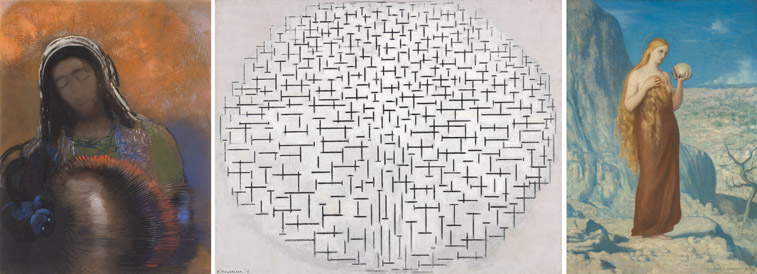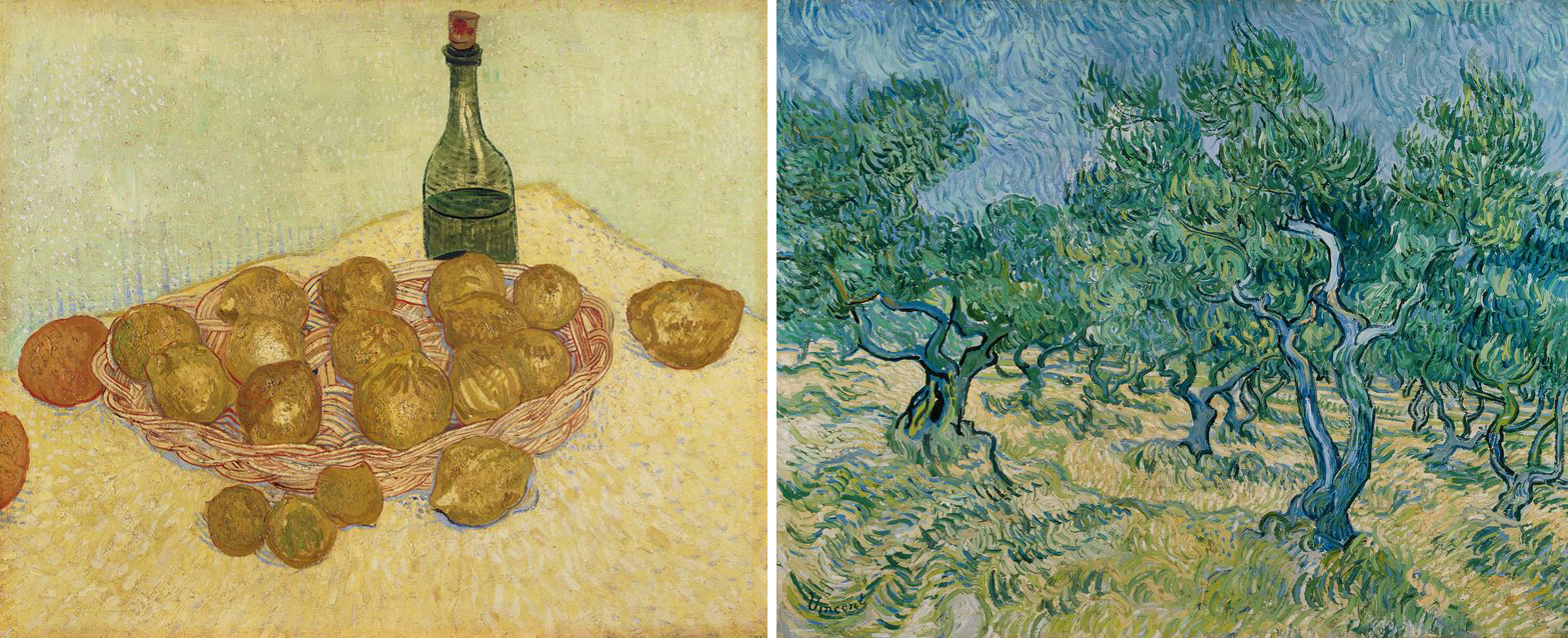
The exhibition includes paintings by Vincent van Gogh, Johan Thorn Prikker, Jan Toorop, William Degouve de Nuncques, Odilon Redon, Pierre Puvis de Chavannes, Jan Sluyters, Charley Toorop and Piet Mondriaan, among others. And sculptures by artists including John Rädecker, Johan Coenraad Altorf.

Helene’s motto: spirit and matter are one
Spiritus et Materia Unum means spirit and matter are one. This emblem on the museum's facade was designed by Belgian artist and architect Henry van de Velde. It is the life motto of Helene Kröller-Müller (1869–1939), one of the Netherlands' most important and forward-thinking art collectors. For many visitors of the Kröller-Müller Museum, the relationship with spirituality and philosophy is not immediately obvious. Nevertheless, it is one of the main foundations upon which the collection is built.
 Art as the key to the soul
Art as the key to the soul
As a teenager at school in Düsseldorf, Helene was introduced to literature by great German writers and philosophers such as Lessing, Goethe and Schiller. They believed that thinking for oneself was more important than adherence to a religion and strove for freedom and progress throughout society. This way of thinking was a revelation to Helene and led to doubts about her faith.
After a long search for other forms of spirituality and meaning in her life, at the age of 36 Helene finds the key to the realm of the soul in art. Through H.P. Bremmer's art appreciation classes, she becomes captivated by the philosophy of 17th-century Dutch philosopher Spinoza. The essence of Spinoza's teachings, seeking God in all things earthly, forms the basis of her life motto.

Fascination with Van Gogh
Thanks to Bremer's definition of art as the conveyance of a spiritual experience, Helene also learned to appreciate and understand the work of the then relatively unknown Vincent van Gogh. She became convinced that this artist was ‘one of the great spirits of modern art’ and that his work would usher in a new development in art. Regarding Basket of Lemons and Bottle (May 1888), Helene wrote in March 1909: 'If you can place yourself in the mind of someone who was able to see lemons and interpret them for us in such a way, then you will enjoy art because from it you feel that, despite everything, there is something in the world that we are always seeking and for which we should always have respect.'. In addition to Basket of Lemons and Bottle, the exhibition also includes Van Gogh's Olive Grove (July 1889).
A different perspective?
What happens when we look at this art with contemporary eyes? For seven works in the exhibition, philosopher and writer Désanne van Brederode offers different perspectives on how to experience art through conversations. She also discussed the work with her neighbour's girls. In the family tour, they take you through their discoveries and observations. You will find the audio tours in the exhibition. Would you like to listen to a conversation back at home? The tours are also available online.
Activities
In addition to the audio tours, there are also so-called Doordenkers: guides in the exhibition rooms who invite you for an intuitive conversation. They are at the museum every Sunday and on Wednesdays and Sundays during the holidays, from 12.00 to 16.00 hrs.
Want to know more about Helene Kröller-Müller’s journey through spirituality and philosophy? Join an introductory tour. In 45 minutes, one of our tour guides will take you through the exhibition. Every Thursday (except for 1 May), there is an introductory tour in Dutch at 11am, and in English at 2pm.
Read the exhibition texts
Download the exhibition texts in large-format letters here
